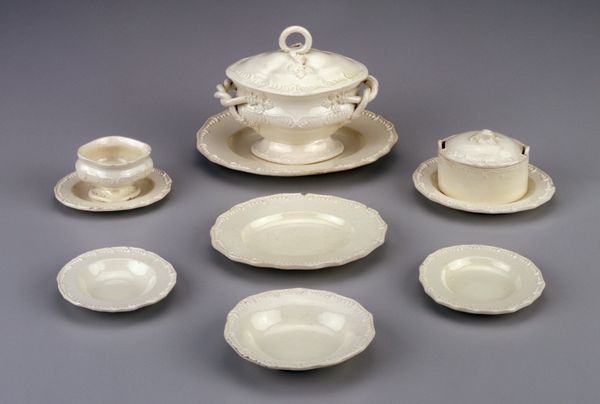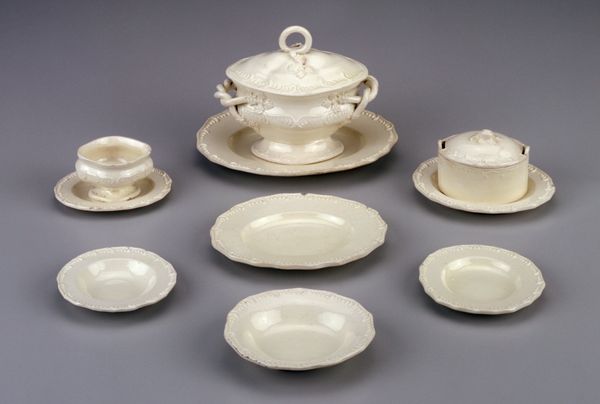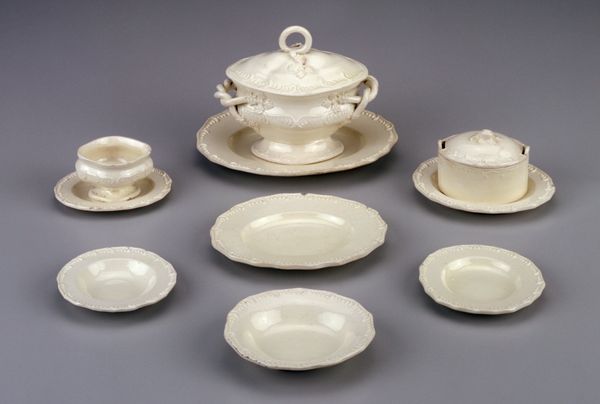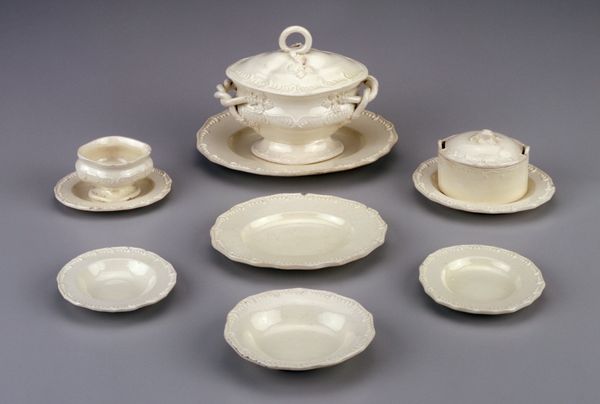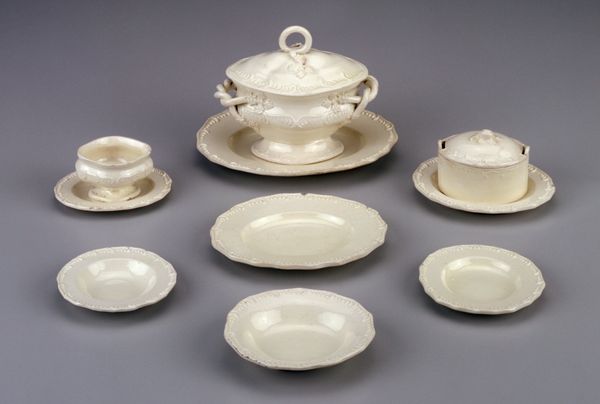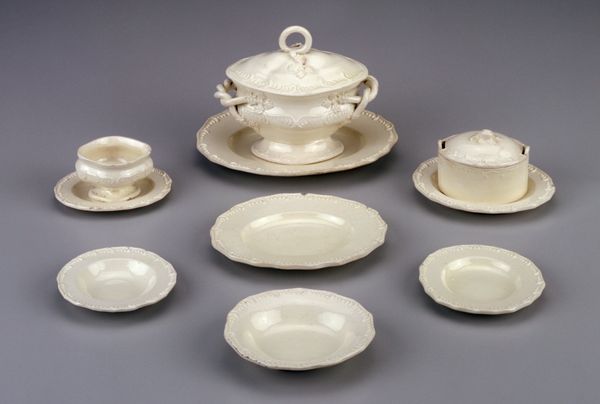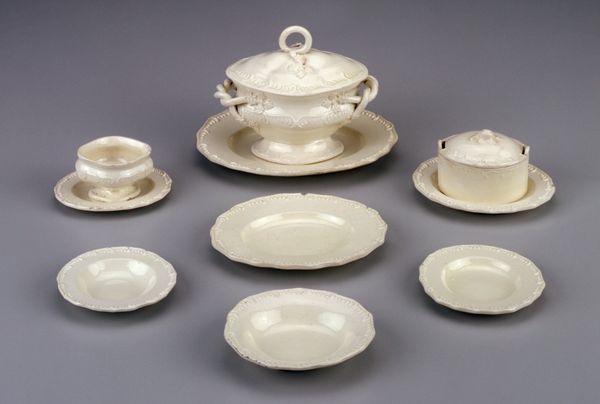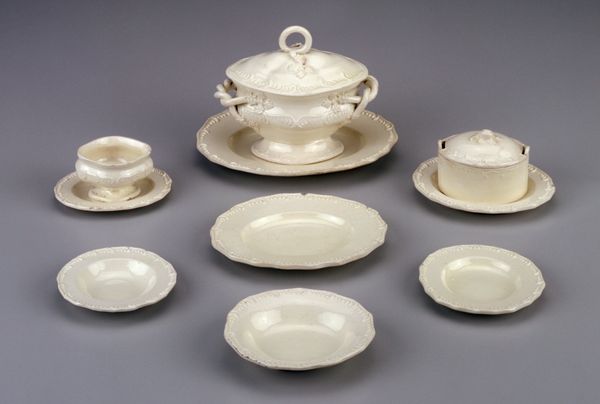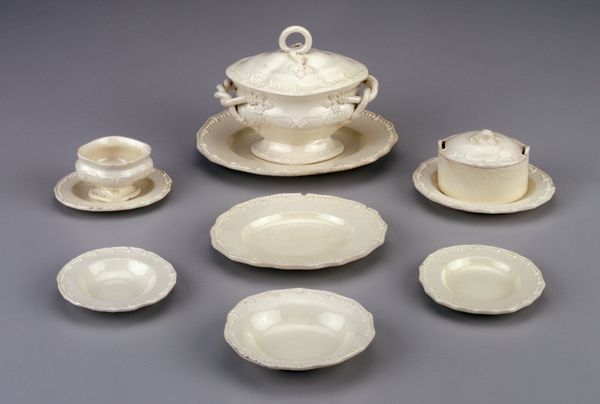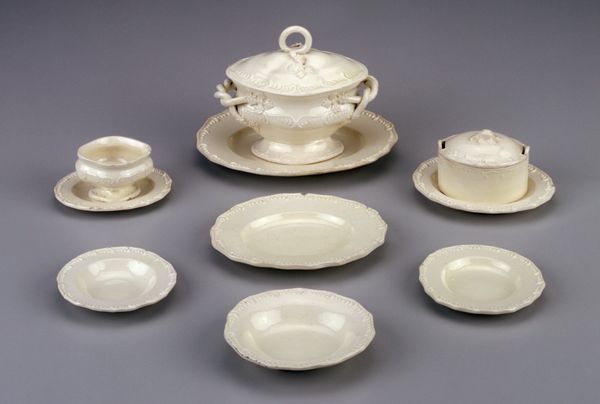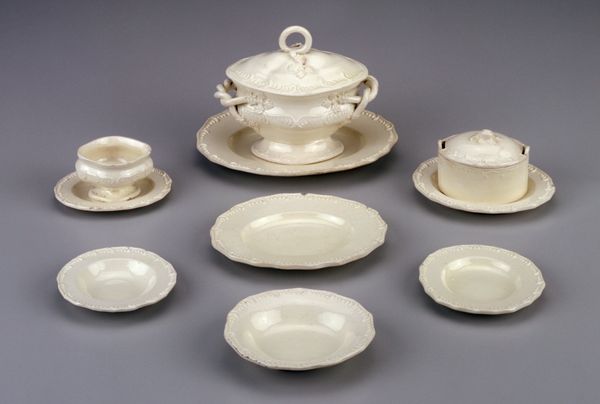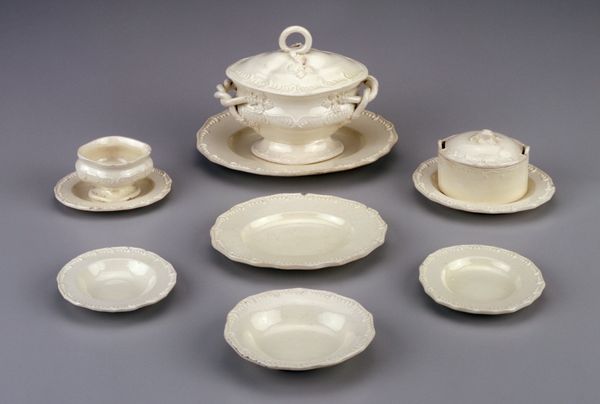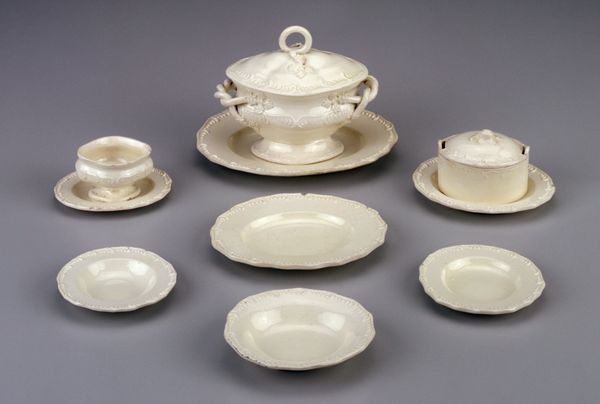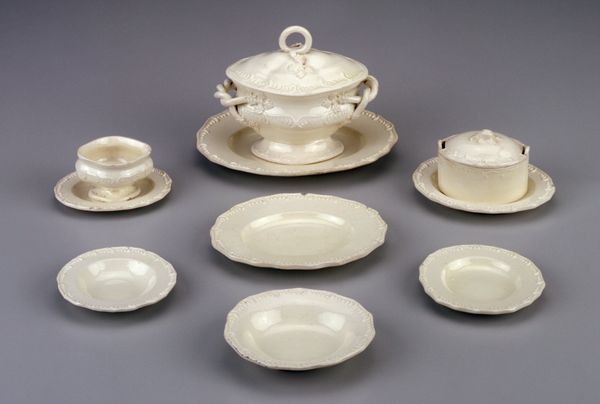
Dimensions: 3 3/4 x 5 1/8 x 4 1/8in. (9.5 x 13 x 10.5cm)
Copyright: Public Domain
This off-white, earthenware tureen and accompanying tableware speak to the history of class and consumption. Created by an anonymous maker, this dinner service reflects the rise of industrialization and the expansion of consumer culture. During this period, dining became increasingly ritualized among the middle and upper classes. Porcelain, like this, was a symbol of wealth and status, reflecting a family's ability to afford luxury items. The delicate design of this tureen and its matching dishes also suggests a certain level of refinement and taste. These objects also raise questions about labor and production. Who made this tureen, and under what conditions? What were their lives like, and how did their labor contribute to the lifestyles of the wealthy? These are crucial questions that remind us that objects, even those as seemingly innocuous as a tureen, are always embedded in complex social and economic relations. This dinnerware, beautiful as it is, speaks volumes about power, privilege, and the human cost of consumption.
Comments
minneapolisinstituteofart almost 2 years ago
⋮
In the eighteenth, nineteenth, and early centuries, child-sized tea and dinner services were given as toys to help introduce table manners. The toy services could be an exact miniature of the real wares, giving a child practice at handling delicate ceramics. In addition to the toys in this case, note the modern German child's dishes elsewhere in this gallery, and the 1830s transferware set in the MacFarlane Memorial Room.
Join the conversation
Join millions of artists and users on Artera today and experience the ultimate creative platform.
